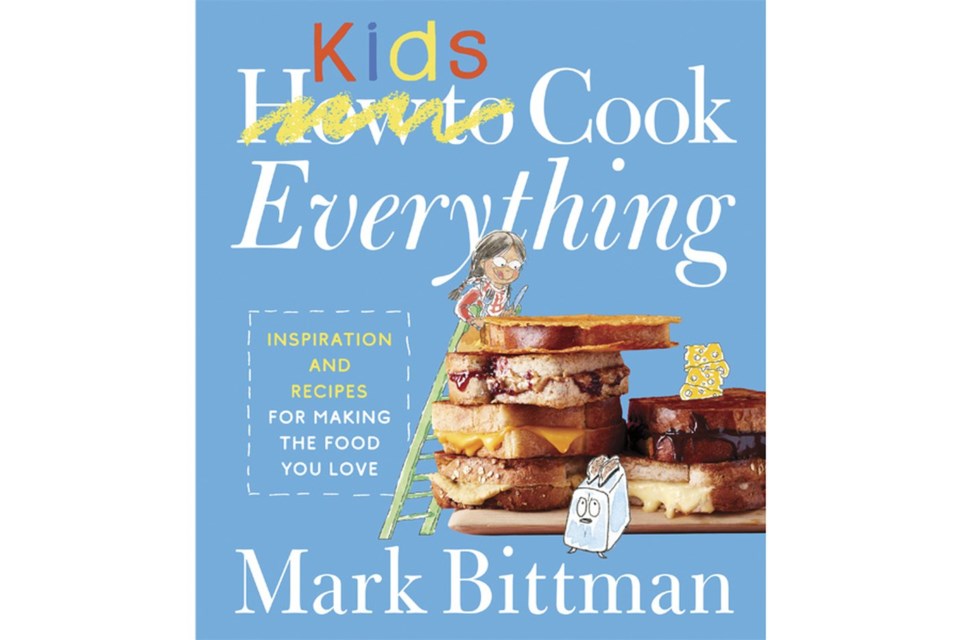NEW YORK (AP) — Mark Bittman has taught us how to cook everything — how to bake and grill, prepare fish and vegetarian meals and do it fast. This fall, he's targeting a different kind of home chef — the little ones.
“How to Cook Everything Kids” is written for children aged 8-12 and is bursting with photos, graphics, advice and techniques to empower any mini-Julia Childs in your home.
“It required a different kind of thinking,” Bittman says. “This is a book that is built to please kids and we’re not kids. So we had to consult with kids. We had to try to think like kids and about kids.”
Bittman, who has evolved from recipe developer and culinary writer into one of the leading voices on food and health policies, offers his take on kid-friendly dishes like baked ziti, chicken nuggets and chicken with orange sauce, giving easy directions and variations, like pork chops with apples for the latter dish.
The tone is less pedantic and more encouraging, allowing room for younger chefs to experiment and customize dishes. There are lists — like “9 Ways to Flavor Scrambled Eggs” — and recipes for substituting soy sauce glaze with sweet-and-sour, peanut and hot variations. “You do you,” Bittman writes at one point.
‘Fun visually’
It's a useful resource for first-time cooks, explaining things like garbanzo beans are the same as chickpeas and offering helpful sections on spices and herbs, kitchen equipment and how to prep everything from butternut squash to corn. There are pictures of kids throughout the book.
“We wanted it to feel inviting and fun visually for the kids. I think keeping their interest and holding their attention was something that we really wanted to do,” says Jacqueline Quirk, an associate editor at Harvest, an imprint of HarperCollins.
Bittman says the hope is that “How to Cook Everything Kids” will teach children that cooking isn't hard and they can produce things that taste good — lifelong paths toward better health and breaking the addiction to eating out.
“If you empower them to make it themselves, they’ll be more likely to enjoy it, even if it’s a strange vegetable or something like that,” says Quirk. “We wanted to inspire an adventurousness in kids.”
Bittman is also the author of several books, including, among others, “How to Cook Everything,” “Fish,” and “Food Matters,” which looks at the intersection of diet, personal and planetary health. Extending his franchise to kids made sense.
“There’s a lot of stuff in here that 4- and 5-year-olds might get a kick out of if they’re so inclined,” Bittman says. “The important thing is that parents set the example and that’s a more important thing than having kids do hands-on cooking.”
He laughs that, when he was a kid, the only cooking he did was to mix chocolate syrup and peanut butter in a glass to see what would happen.
“Now you’ll have 4-year-olds who will tell you that they want to be chefs when they grow up and that’s really different. Chefs were not visible people when I was younger, even when my kids were young,” he says. “Even being a food writer is an acceptable career.”
Color and sweetness but no mandolins
The book — organized by dishes like soups, breakfast, sandwiches, pasta, breads, main meals and grains and beans — reaches a crescendo with a beef and vegetable stir fry, a dish Bittman considers part of a holy trinity.
“I think there’s three critical recipes in this world. And they are: stir fry, rice and beans, and chopped salad. Imagine mastering those, or having a sense of those, when you were 12 — you’re sort of set for life at that point,” Bittman says.
“Almost everything that people wind up cooking can fall into one of those three categories. Those are sort of the mainstays of world cooking,” he adds.
The book tries not to lean on kitchen machines — and urges kids to get a parent or caregiver to help with things like blenders — and one utensil was banished completely: the mandolin. Even Quirk is wary of them.
Bittman has bent to his audience to make visually attractive dishes — like pasta with blueberry — and cooks some ingredients, like sweet potatoes and carrots, for a long time so the natural sugars shine.
“There’s more color in here than we would normally pay attention to. And, quite frankly, there’s more sugar in here than we would normally pay attention to,” he says. “We are focusing on real foods and good foods, but we’re allowing for the fact that kids really do gravitate toward sweets and you have to accommodate that to some extent.”
Mark Kennedy, The Associated Press




